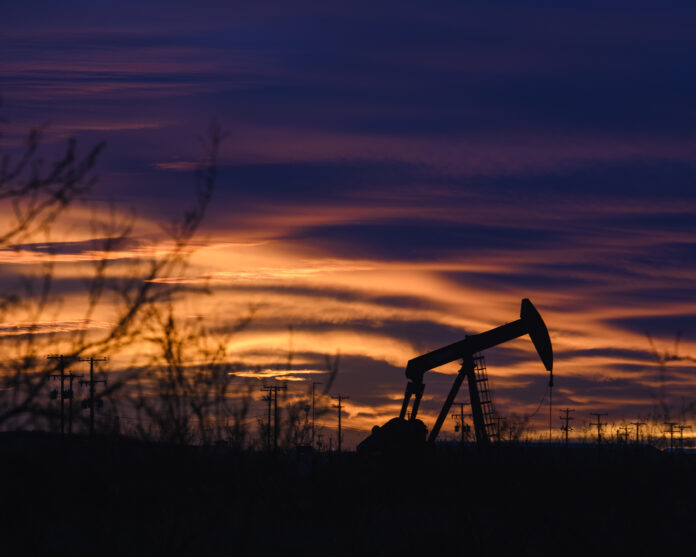
Starting with a model of the Texas economy when he was a young professor at Baylor University, economist Ray Perryman of Odessa built a global system that lets him analyze thousands of markets including the Permian Basin, which he says promises almost unlimited growth with more oil and natural gas reserves than anyone imagined a half century ago.
“I suppose my journey began in graduate school when I began building very large statistical models of the economy starting with the international monetary system,” Perryman said. “As a young professor in the mid-1970s, I took on the task of building a large-scale model of the Texas economy that was completed just in time to predict the transition from oil boom to bust.
“In the ensuing almost 50 years this has morphed from one state and a few thousand equations into a system containing tens of millions of expressions, thanks in no small measure to advances in computing and data mining capabilities. I even had to develop some mathematics along the way to handle the sheer magnitude of the processing.”
As president-CEO of the Perryman Group in Waco, the Ph.D. graduate of Rice University explained that modeling the Basin entails gauging the dynamic, complex interactions of employment, output, income, prices and spending in hundreds of industries in various regions throughout the world as well as their supply chains.
“We also monitor data from myriad sources and communicate with knowledgeable actors across the spectrum,” he said. “I even have math to integrate all this qualitative material into quantitative metrics. This approach certainly does not produce perfect forecasts, but it does ensure that mounds of relevant information are rationalized in a systematic and consistent manner.”
Perryman’s firm has worked for almost 3,000 clients including 10 cabinet departments, over half of the Fortune 100, two-thirds of the Global 25, the 12 largest technology firms, the six largest energy companies and the five largest financial institutions in the world.
He said the Basin “is among the world’s most important oil-producing regions with a long and storied history dating back to 1921.
“Moreover the area has a crucial role to play in meeting future global needs for energy,” he said. “It wasn’t all that long ago that the headlines warned of peak oil and expressed fears that maximum production had been reached in the 1970s and would trend downward until we simply ran out.
“However, a combination of factors caused sweeping changes in the petroleum sector and production and consumption are now at record levels. The widespread implementation of hydraulic fracturing and horizontal drilling over a decade ago led to dramatic increases in output while other advances in operations and technology fostered greater cost efficiency.”
Odessa oilman Kirk Edwards said it is unusual for a man like Perryman to live in Odessa.
“How blessed we are to have a talent like Ray Perryman that we can call an Odessan,” Edwards said. “When you read his articles or hear him speak publicly you know you are in the presence of a unique individual in our world.
“The way his mind can function and hone in on the intricacies of our economy is truly amazing.”
Edwards said he came to fully appreciate Perryman during six years on the El Paso Branch Board of Directors of the Dallas Federal Reserve Bank.
“During that time, I received monthly updates on the economy from some of the truly great minds in that field,” he said. “But none of them came close to the knowledge and communication skills that Ray Perryman possesses.
“He is truly exceptional in his field and we are all so lucky to have him as a friend to Odessa and the Permian Basin.”

Reviewing the area’s production history, Perryman said each drilling rig here in 2007 led to the production of about 55 barrels of oil per day, which by 2014 had increased to a little over 200 b/pd. “The recovery rate then began to surge, passing 400 b/pd in 2015 and consistently exceeding 600 b/pd by late 2017,” he said.
“It’s presently around 1,300 b/pd and the U.S. is now the world’s leading oil and gas producer with about two-thirds of the incremental output occurring in the Permian Basin. The area now generates almost six million b/pd of oil and 24 billion cubic feet of natural gas.”
Perryman said the region’s capacity is demonstrated by the rising estimates of its reserves.
“Despite massive increases in production over the past 15 years, reserve levels have continued to rise markedly with new discoveries,” he said. “In fact reserves are more than five times higher than in 2009 with shale gas reserves being more than 9,000 times higher.
“Current proven reserves stand at about 105 billion barrels of oil and 229 trillion cubic feet of natural gas or about triple the total production over the past century. We recently valued the portion of that amount that is economically recoverable at this point, about 18.5 billion barrels of oil and 88 trillion cubic feet of gas, at almost $2 trillion.”
Perryman said current technology only recovers 8 percent of the oil in shale formations with no secondary or tertiary recovery process.
“Even very modest improvements would dramatically escalate production and reserves,” he said. “The unique geology of the region, with some areas having as many as 15 stacked formations that are potentially productive, also contributes to the likelihood of ongoing reserve increases.
“In fact the U.S. Geological Survey estimates that there are billions of barrels of oil and trillions of cubic feet of gas that are not yet even identified.”
Perryman said the Basin is also strategically positioned in terms of climate-related issues.
“One factor that should influence future growth is the low carbon nature of the crude oil in the region,” he said. “The carbon dioxide content is 22.8 percent lower than the average of the remainder of world production.
“Permian oil has a 57.6-percent advantage over most Middle Eastern oil and it is 74.4 percent below the CO2 content of tight sand formations in Canada. It is substantially cleaner than the Mayan oil from Mexico and the production from Nigeria.”
In fact, Perryman said, Permian Basin petroleum “has the most attractive low carbon characteristics of any major onshore formation in the world.
“As a result, market forces will tend to drive global demand toward lower carbon sources, thus enhancing the region’s prospects,” Perryman said.
He said his company’s model indicates that the worldwide consumption of oil and gas in 2050 will be at least 30 percent higher than the present levels.
“All these projections incorporate dramatic expansion in renewable and other alternative energy sources,” Perryman said. “Despite the complexities the key drivers of energy consumption are population and economic growth.
“Global population is projected to rise by 1.7 billion with 94 percent of the growth in Africa, India and emerging countries primarily in the Asia-Pacific region. Global GDP is expected to more than double by 2050.”
He said the Basin “faces daunting challenges in meeting workforce, education, infrastructure, healthcare, water and quality of life requirements to fully capture the prospective benefits, but it also has the resources to address them.
“There are certainly no guarantees in future economic patterns, yet all the signs point to a most compelling opportunity,” Perryman said.



